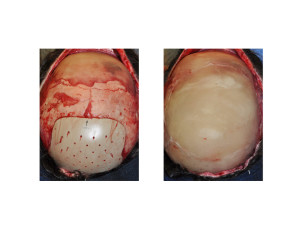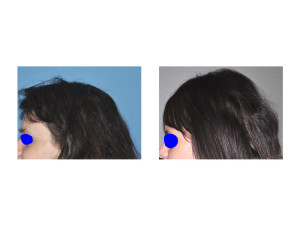Background: The size and shape of the skull can be safely increased for a variety of aesthetic reasons by onlay materials. Regardless of the material used to create the skull augmentation serious consideration must be given to how well the overlying scalp can accommodate it. If the scalp incision used to place it can not be closed or is closed under extreme tension, the complications that will ensue are obvious. Based on my skull reshaping/augmentation experience, I have learned that about 10 to 15 millimeters is the most amount a scalp can safely stretch…and that will also be influenced by the scope of the skull surface area covered.
The most common skull area that is requested to be augmented is the back of the head. Women request occipital augmentation for two reasons, to either build out a very flat back of the head (just like some men) or to build out the upper occipital/vertex region. (not a common male request) While both achieve an occipital skull increase, the location of the area of skull augmentation and its outward effects are different. The woman who desires more of a combined occipital-vertex augmentation seeks to create a higher hairline level or ‘bump it’ effect from both the frontal and side views.
For large amounts of vertex skull augmentation or for ‘failed’ prior occipital augmentation procedures, a first stage scalp expansion procedure is needed. The scalp expansion amount does not need to be significant as what one sees with many scalp expansions that are done for other procedures. There is a big difference between expanding the scalp to cover a large scalp tissue loss versus what is needed to stretch out the scalp a bit to cover a larger skull augmentation.
Case Study: This 28 year old female had a prior occipital implant placed in another country to give her more skull height in the vertex and upper occipital region. It did not produce the desired effect and created vey little augmentation effect at all. It was done through a long zig zag scalp incision pattern which left her with a very wide scar line as the sequelae. To get her the skull augmentation result she desired as well as create enough scalp to do a total scar excision, a two-stage skull augmnetation procedure was planned.
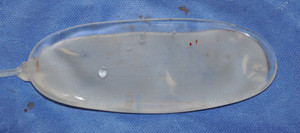
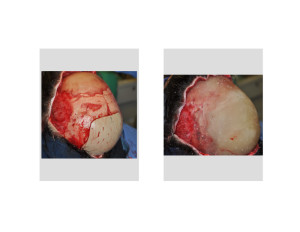
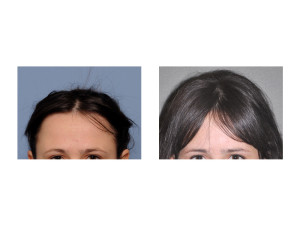
Highlights:
1) The amount of skull augmentation that can be obtained is the limit of how much the overlying scalp can safely expand.
2) Extreme or large amounts of skull augmentation require a first-stage scalp tissue expander procedure.
3) With a first-stage scalp tissue expansion the skull can be augmented as much as 2.5 to 3 cms in many places.
Dr. Barry Eppley
Indianapolis, Indiana



